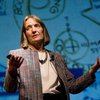Toward Boosting Our Collective IQ: A Knowledge-Centric Approach
A Selection of Writings by Douglas C. Engelbart
In the early 1990s, Doug Engelbart, renowned innovator, described the basic components of a dynamic knowledge ecosystem, and the knowledgebases that are constantly evolving from within these ecosystems, as a wake-up call for IT professionals as well as business users. His call to action is even more viable and pressing today as the scope and method of interaction and collaboration become increasingly distributed, networked, cross-functional, cross-disciplinary, cross-organizational, cross-cultural, interdependent, complex, and urgent on a global scale -- just as he predicted. Here we present his view of what is needed as well as an update by his daughter and innovation partner, Christina, on how far we have come in achieving his vision.
NETTING IT OUT (PREFACE)
This paper is adapted from “Boosting Our Collective IQ,” 1995, a selection of readings by Dr. Douglas C. Engelbart produced for the 4th International World Wide Web Conference in 1995. Editing and preface for this new edition by Christina Engelbart, March 2011.
In the early 1990s, Doug Engelbart, renowned innovator who, among many other credits, invented the computer mouse, described the basic components of a dynamic knowledge ecosystem, and the knowledgebases that are constantly evolving from within these ecosystems, as a wake-up call for IT professionals as well as business users. His call to action is even more viable and pressing today as the scope and method of interaction and collaboration become increasingly distributed, networked, cross-functional, cross-disciplinary, cross-organizational, cross-cultural, interdependent, complex, and urgent on a global scale — just as he predicted. His prescription for the technology is essentially a checklist of what is still missing in today's tools that, when embedded in our knowledge ecosystems, will enable us to make quantum leap improvements in the way we work together on important challenges in business and society.
Innovating our dynamic knowledge ecosystems, as Doug describes in this seminal work, would be a great benefit to anyone who is charged with managing multiple projects in the areas of innovation, customer experience, or any other knowledge-intensive initiative. As we work to effectively innovate with, collaborate with, and respond to our customers’ (and our own organizations’) need, we should work toward increasing our Collective IQ—to best leverage our group brain, as it were. And we do this by sharing our ideas and solutions, and by finding tools and methods by which we can work together to capture, manage, access and learn from the shared knowledge, reusing it and evolving it in an effort to become more effective at addressing the problems facing ourselves, our businesses, our customers, and our society.
I hope you find my father’s thoughts compelling and helpful as you work on increasing your own Collective IQ by designing and cultivating your own thriving knowledge ecosystems.
~ Christina Englelbart

© 2011 Doug Engelbart Institute
Figure 1. The high-level Core of a CoDIAK Process.
INTRODUCTION1
I became motivated (committed) in 1951 to improving mankind's capability for dealing with its pressing problems, especially those over-taxing our collective capability to cope with complexity and urgency. I visualized people collaborating interactively on visual displays connected to a computer complex.
By 1962 I'd published “Augmenting Human Intellect: A Conceptual Framework.” Its fundamental concepts still guide my pursuit. The design principles I concentrate on here are but secondary derivatives of that larger-goal conceptual framework. In fact, all our own computer developments into the 1970s (synchronous distributed shared-screen conferencing, windowing systems, outlining tools, hypermedia, the mouse, among others) were secondary derivatives of this conceptual framework; I view the computer merely as a supportive tool.
My goal here is to sketch out basic requirements for supporting the dynamic knowledge ecosystems of teams, initiatives, organizations networks and society, and to encourage the further development of the framework's technological cornerstone – a world-wide open hyperdocument system (OHS) enabling seamless interoperability within and between distributed knowledge ecosystems.
CoDIAK: ANATOMY OF A DYNAMIC KNOWLEDGE ECOSYSTEM2
Increased pressure for reduced product cycle time, and for more and more work to be done concurrently, is forcing unprecedented coordination across project functions and organizational boundaries. The need for highly effective knowledge work capabilities is becoming increasingly urgent. Yet most organizations do not have a comprehensive picture of what knowledge work is, and of what aspects would be most profitable to improve. In my mind, the point of greatest leverage is what I have come to call "CoDIAK" for the COncurrent Development, Integration and Application of Knowledge.
Figure 1 represents the high-level core of a CoDIAK process, such as can be found in any complex knowledge-intensive task or project. In the center is a basic organizational unit, representing the interactive knowledge domains of a single individual, or of individuals or groups within a project team, department, functional unit, division, task force, whole organization, community, or nation.
Each organizational unit is continuously analyzing, digesting, integrating, collaborating, developing, applying, and re-using its knowledge, much of which is ingested from its external environment.
A result of this continuous knowledge process is a dynamically evolving knowledge base, or dynamic knowledge repository (DKR), consisting of three primary knowledge domains (see Figure 2)...
ABOUT DOUG ENGELBART
Throughout his 50-year career, Doug Engelbart established an unparalleled track record in predicting, designing and implementing the future of organizational computing. Best known for inventing the computer mouse, he pioneered human-computer interaction, hypertext, groupware, knowledge management, and online communities, as well as strategic organizing principles for customer-oriented continuous improvement and innovation. Integrated prototypes were in full operation within his research lab as early as 1968, which later evolved to support thousands of users benefitting from its unique team support capabilities. Doug authored numerous seminal articles, and 21 patents, although he considered his strategic approach to be his most important breakthrough, which inspired all his other pioneering firsts. After nearly 40 years in industry and research, he founded the Bootstrap Institute (now the Doug Engelbart Institute) with daughter/partner Christina Engelbart, to carry on his visionary work. He was awarded numerous honors for lifetime achievement and innovation, including the National Medal of Technology, the Lemelson-MIT Prize, and ACM's A.M. Turing Award.
***Endnotes***
1) Sections “Introduction” and “Extending the WWW with OHS Functionality” adapted and excerpted from Toward Augmenting the Human Intellect and Boosting Collective IQ, by Douglas C. Engelbart, Copyright, August 1995. Communications of the Association for computing Machinery Inc., [ACM].
2) Sections “CoDIAK: The Anatomy of a Dynamic Knowledge Ecosystem” and “OHS: For Generic CoDIAK Support” are adapted and excerpted from Toward High Performance Organizations: A Strategic Role for Groupware, by Douglas C. Engelbart, Proceedings of the GroupWare '92 Conference, San Jose, CA, August 3-5, 1992, Morgan Kaufmann Publisher, pp 77-100.
***Endnotes***
Sign in to download the full article
0 comments
Be the first one to comment.




